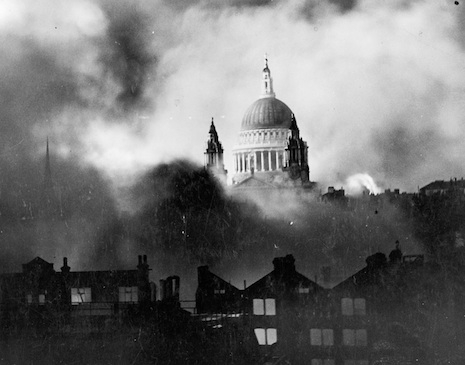
In September 1940, the German Luftwaffe unleashed a strategic bombing campaign that targeted all of the major cities across the UK. Over 30,000 tons of high explosives were dropped on sixteen cities during a relentless over 267-day campaign, or “Blitzkrieg” (German for “lightening war”), that claimed over 40,000 civilian lives—half them in London alone—wounded over 100,000 and destroyed more than a million homes. It was an event that changed the nature of the war, and brought repercussions for Germany.
My mother was a child during the Second World War, living with her parents and sister in a tenement in the north-west of Glasgow. She can still clearly recall the regular sound of the siren warning of another German bombing raid. People decamped to the bomb shelters situated in the back gardens, where my mother listened to the whistle and blast of the bombs, land mines and other incendiaries raining down from the planes above.
In March 1941, she was briefly evacuated to a cottage in Milport on the isle of Great Cumbrae, off the west coast of Scotland. During this time, the Luftwaffe carried out two bombing raids on Clydebank—that have been described as “the most cataclysmic event” in war-time Scotland. My mother recalled how the German planes seemed to fly so low she felt she could touch them, while the flames from the raid lit up the sky like it was day.
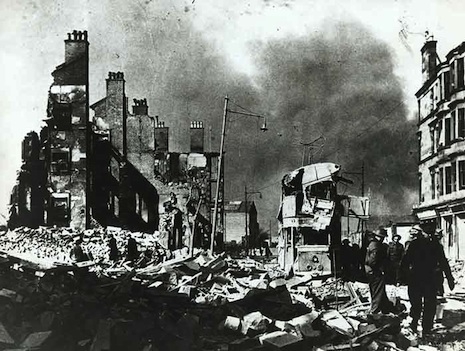
Clydebank, near Glasgow, after the ‘blitz’ of March 1941.
The Blitz saw 71 Luftwaffe bombing raids on London, eight on Birmingham, Liverpool and Plymouth, six on Bristol six, five on Glasgow, four on Southampton, three on Portsmouth and Hull, and at least one large raid on another eight cities.
Bomb Sight has mapped the aggregate bomb census during the London Blitz 1940-41, where some 18,291 tons of high explosives were dropped over 71 Nazi air raids, on to an interactive map.
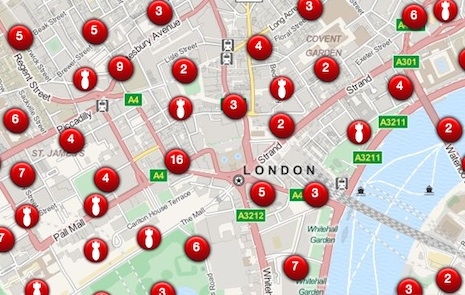
Users can see the areas where bombs were dropped by the Luftwaffe, and by clicking on one of the red bomb icons, can find out what kind of incendiary was dropped and see contemporary photographs of the area and the damage caused. It gives a fascinating insight into life during war time. See more here.
The following photographs give an idea of what it was like to live through the Blitz.
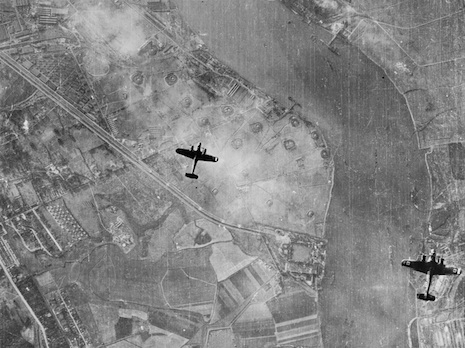
German bombers fly over London in September 1940.
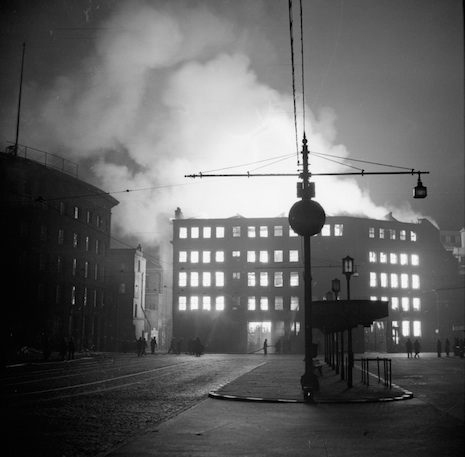
Manchester set alight in December 1940.
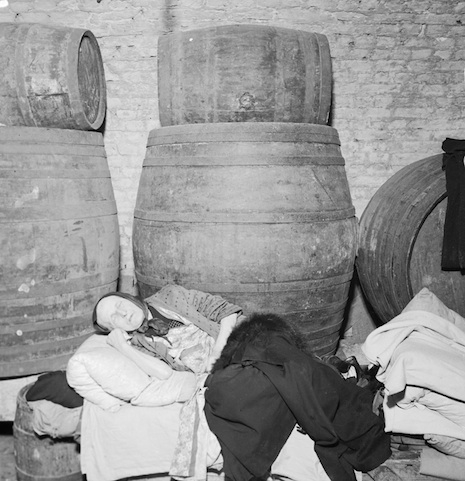
Taking underground shelter in a wine merchant’s cellar.
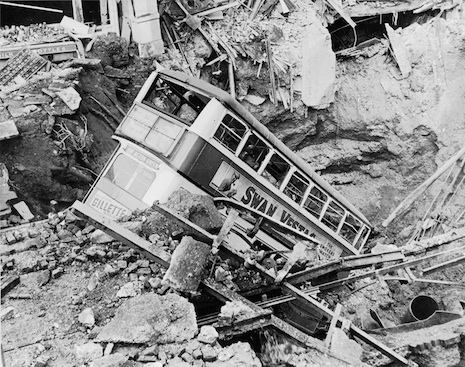
Devastation in the south of London—a bus lies in the rubble of a bomb crater.
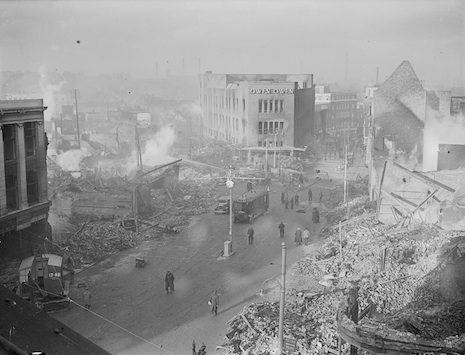
Central Coventry after a bombing raid November 1940.
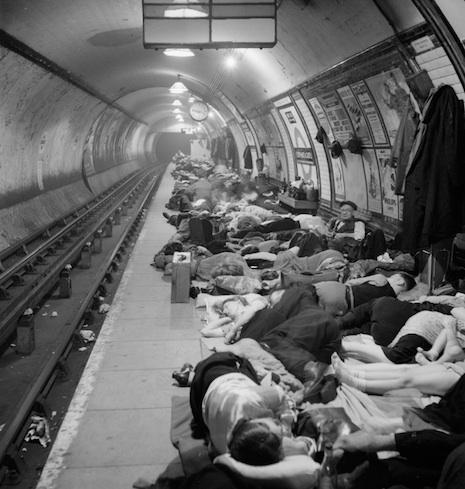
Sleeping in the shelter of London’s Underground station at Elephant and Castle, November 1940.
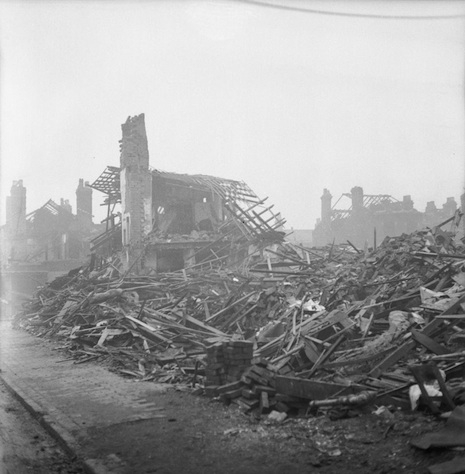
What was left of Queen’s Road, Aston, Birmingham.
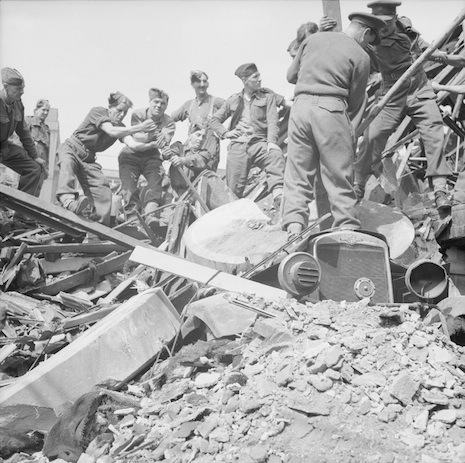
Soldiers of the 9th Battalion, Hampshire Regiment, clearing bomb damage in Hull.

Damage to shops, mannequins lie scattered outside John Lewis, Oxford Street, London.
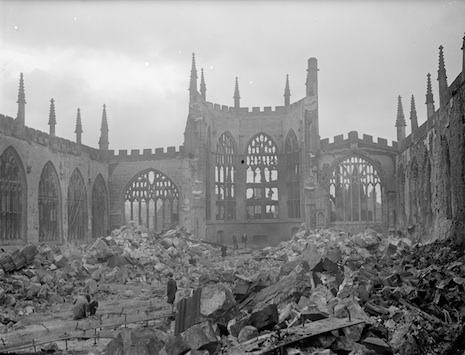
The ruins of Coventry Cathedral after a raid.
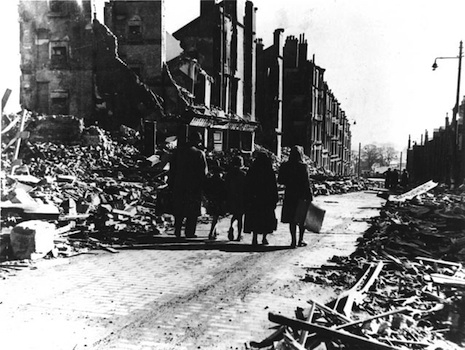
A family walks among the ruins of Clydebank tenements, March 1941.
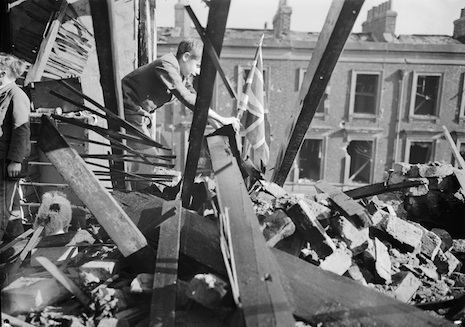
Defiant against the odds—a child hangs a Union jack on the ruins of a home.
Via Metro and Imperial war Museum